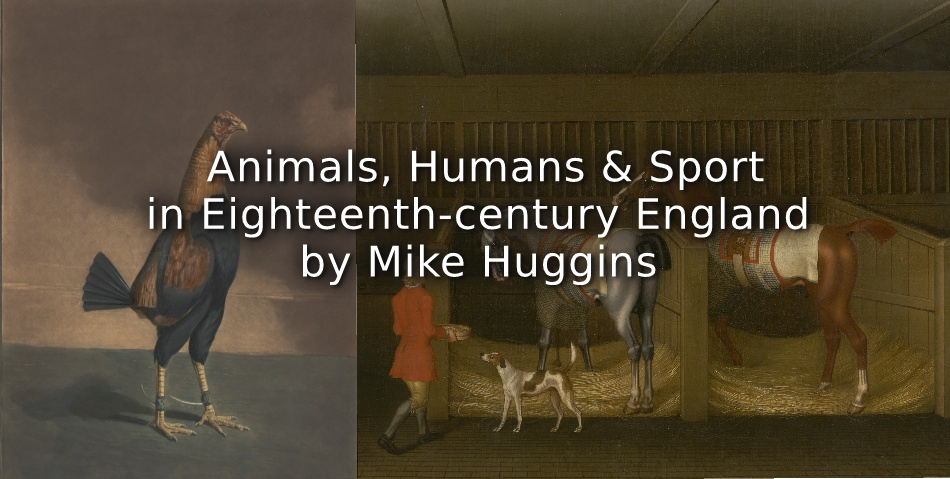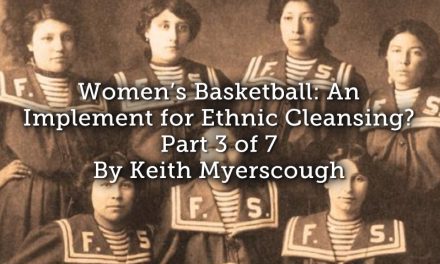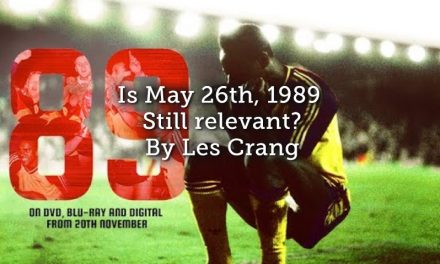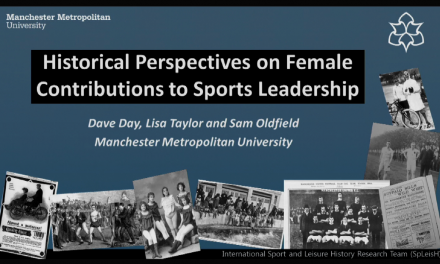Those of us who write books love positive reviews, but it is often the criticisms that are far more helpful in moving our research forward. One reviewer of my last book on eighteenth-century horseracing recently pointed out that I had ‘failed to take period engagements with and conceptions of the animal beyond their current status’. Now that got me thinking, the more so as my next major research project was going to be on eighteenth-century sport, culture and society.
‘Animal-human studies’, and their approaches, have become important new directions to enrich social and cultural history, as historians have begun to better recognise that relationships between animals and humans are two-way affairs. The works of Erica Fudge, Harriet Ritvo, Hilda Kean and others have reminded us that a history without animals ought to be unthinkable!! And the profound interactions with humans of some animals figured prominently in the eighteenth-century sporting world, especially but not solely amongst the elite. Four-legged thoroughbred equine athletes and their riders made horse racing the first proto-modern sport, with major media coverage. Much aristocratic country life centred round the mounted hunting of deer, foxes and hares with packs of hounds. Fishing, sometimes solitary, could be a social activity with friends or family, as George Morland’s picture ‘A Party Angling’, painted in 1789 shows.
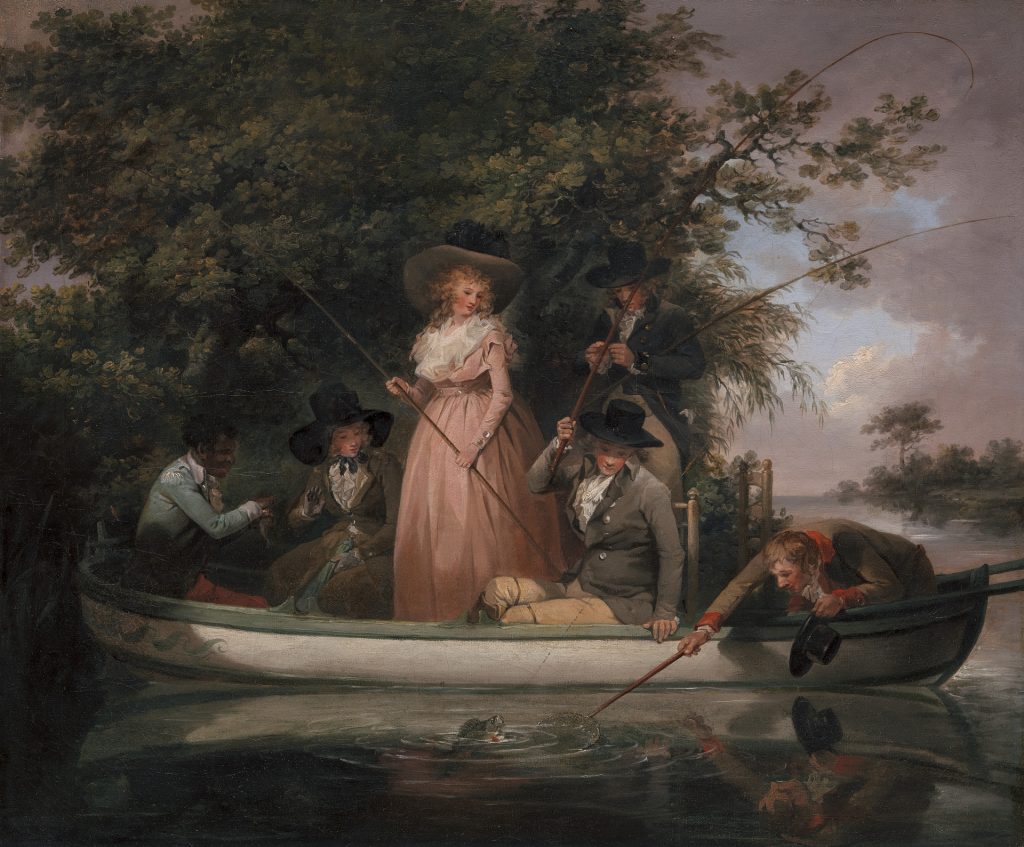
George Morland, A Party Angling 1789
Courtesy of the Yale Center for British Art
There was falconry too, and once firearms were more widely available, woodcock, pheasant and partridge could be shot by estate owners and their friends. Cock-fighting had cross-class support, often with more prize money for a ‘main’ than horse racing, and substantial betting. It was especially popular in the north east and East Anglia. Bull baiting retained popularity in the midlands, as Emma Griffin’s work has shown. And at Stamford, bull running resisted attempts to curb it.
Putting animals and their role in making cultural meaning more centrally is something that historians of sport, with rare exceptions, have yet to do. Much of sports history writing is still behind the curve, and largely adopting a strongly anthropocentric male point of view. We contrast badly with other fields of history, where the range of work taking place is varied, in relation to disciplinary direction, focus, and more sophisticated theoretical engagement. There is also innovative work appearing from a more interdisciplinary approach with contributions from anthropology, art, literature, media, philosophy, and science. It comes under a range of headings: animal studies, anImal-human studies, critical animal studies, and interspecies relations. There are groups such as the Equine History Collective @Equine_History which explore equine and equestrian history, journals such as Cheiron: The International Journal of Equine and Equestrian History, and museums such as the International Museum of the Horse. There is more writing too attempting to re-evaluate the discourse of sensibility around animal killing as a mark of humanity’s relationship to nonhuman animals. However, despite the impressive and still-growing literature on the representation of animals and animal-human relationships these studies have generally paid little attention to animals and sport in the eighteenth century.
For historians of sport this ‘animal turn’ can lead to new theoretical questions. How far can we ever come to know, or understand, eighteenth-century animals when the sources we have access to, and from which we build our histories, are represented by humans? To what extent were human attitudes to animals in sporting contexts highly ambivalent, contradictory or asymmetrical? Were human-animal relations exploitive or beneficial, victimized, collaborative or resistant? How important were emotional attachments? How can we access animals as historical agents in social processes, or recover the animals’ point of view? How did they experience these so-called sports? When I was reading letters and similar accounts from grooms, trainers, jockeys or stud-grooms, there was plenty of material about the active and sometimes recalcitrant nature of horses, some uncontrollable, running away with riders, biting stable boys, kicking out, or throwing riders. I should have looked harder at the situations into which horses were put and their responses to those situations, and tried to read them ‘against the grain’. And to what extent did people understand or misunderstand what they saw?
Eighteenth-century discourse placed humans as top of the living hierarchy, and accepted existing human social structures. For many contemporaries, animals were supposedly inferior, lacking consciences or faith. Yet there were varied and complex human attitudes to the animal world, full of paradox. In general, recognition of animals’ individual rights came only slowly. Some writers took a variety of more concerned views related to some growing awareness of this issue. The philosopher Jeremy Bentham argued that non-human animals deserved moral consideration, and were capable of suffering, so he opposed their mistreatment. in his 1780 Theory of Legislation he believed that the chase of foxes and hares ought to be banned as simply a human amusement, but foxes should be killed because of the damage they caused. Some writers couched their discourse in more sentimental tone. The poet Alexander Pope, in a letter to the Guardian, 21 May 1713 about the end of a stag hunt, described the cutting of the throat of a ‘helpless, trembling and weeping creature’. It was the hare itself that was given voice as narrator in an anonymous1799 anti‐hunting story, The Hare; or, Hunting Incompatible with Humanity. Written as a stimulus to youth towards a proper treatment of animals (London, 1799). And according to a 1793 letter, ‘it does not appear that the ladies take as much delight in angling as they formerly did…their tender feelings do not permit them to torture worms and other insects (sic) to tempt betray and eventually to kill the finny race’.
Keith Thomas, in his Man and the Natural World (1983) offered an early account of period views, although approaching his theme largely within conventional historical methodology. But this growing compassion towards but what animals suffered and how, was highly dependent on the role each species experienced in human economy and leisure culture. Foxes preyed on livestock so should be hunted. Crows and birds of prey were killed by gamekeepers. Farmers killed rabbits. By contrast racehorses and hunters that performed well were valuable.
Painting and prints, architectural sites and written texts can all say something about human-animal relationships, although because all produced by humans, we have to grapple much more than we do currently about the extent of and the value of these representations. Eighteenth-century sporting prints certainly regularly put animals as well as people in the foreground. But we need to recognise the many possible readings of these images and reflect that in our analysis. Thomas Burford’s print ‘Death of the Fox’ shows an enthusiastic pack of over twenty hounds being whipped back from the fox carcass held by a hunt servant, but shows a small black dog trying to join in. What does the picture tell us?
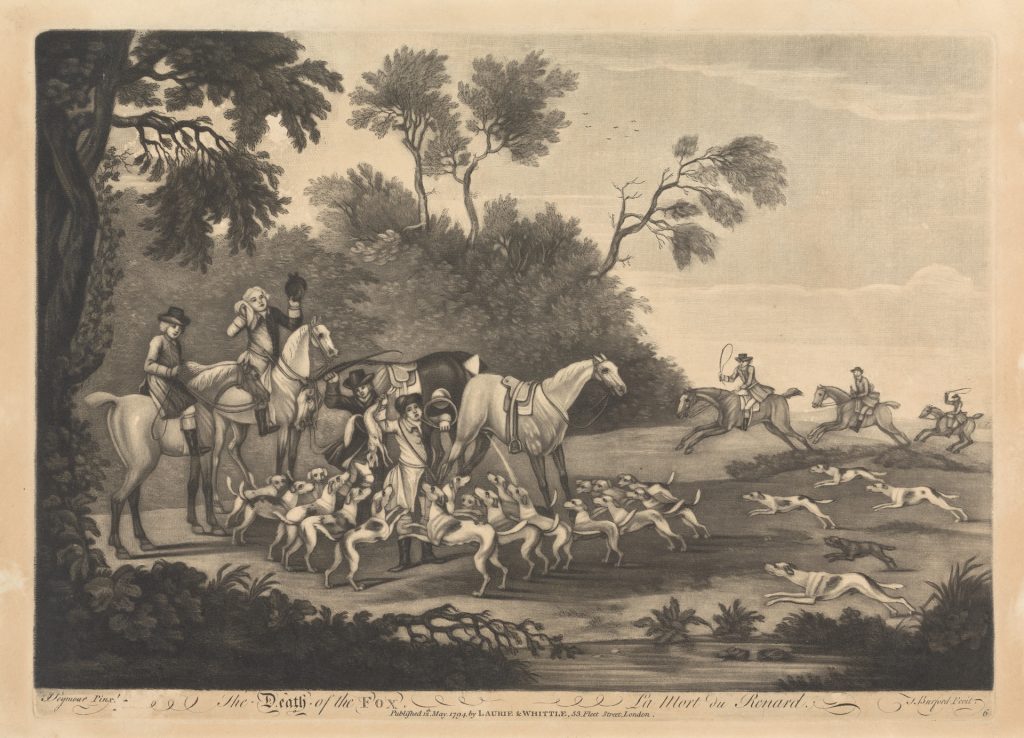
Thomas Burford, Death of the Fox, 1798
Courtesy of the Yale Center for British Art
Dogs were not simply decorative appendages in the family paintings but had relationships with their humans. In Frederick Bryson’s Shooting Party Setting Out, painted in 1789, the painter has tried to capture great affection between the dogs and the human shooters. George Stubbs painted several painters of gentlemen going shooting, always accompanied by their dogs. The shooters showed little concern for the birds they shot. As guns became easier and quicker to load and shoot, there was more emphasis in all hunting sports on the pleasure of the kill. More and more gamebirds were shot each day by shooting parties, and brought back by gundogs, leading to a need for more hand-rearing of chicks and better game preservation to ensure supplies. Dogs could also be seen in stables and elsewhere with horses as a 1747 Seymour painting of two horses being fed by a liveried groom illustrated clearly.
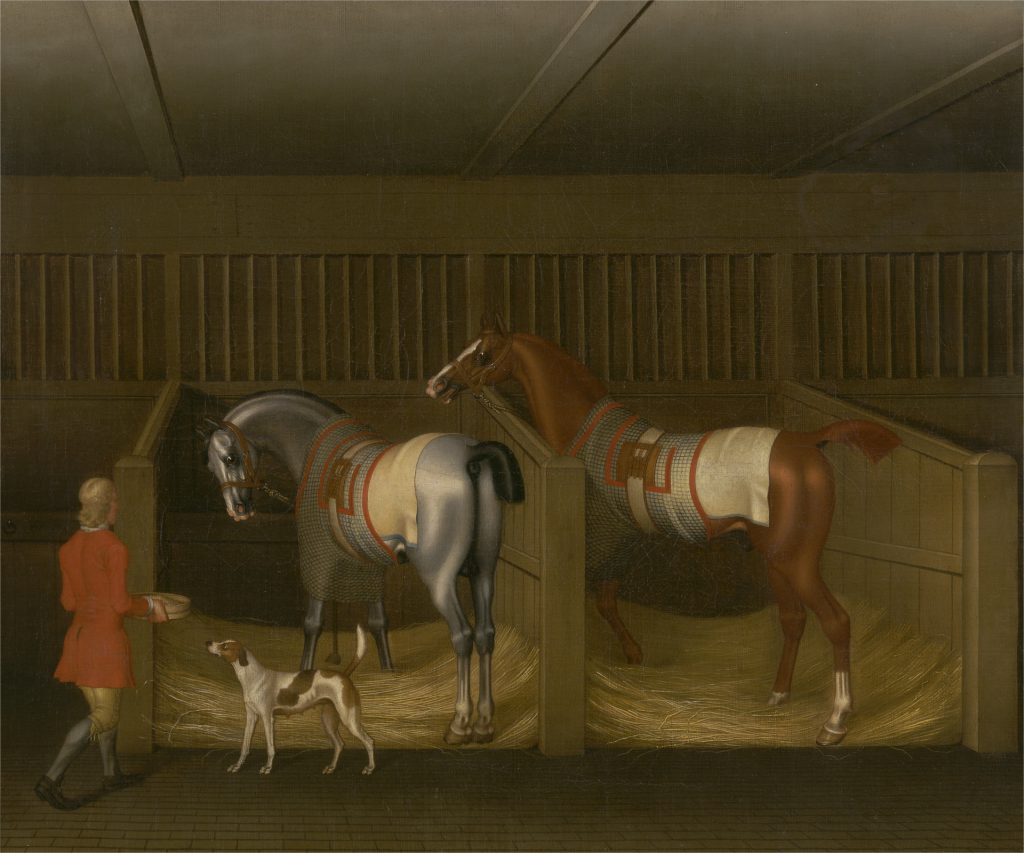
James Seymour, The Stables, 1747
Courtesy of the Yale Center for British Art
Animals left their marks on the countryside of the period. Hare coursing or hunting needed particular types of landscape. Wild game needed constraints. Cockpits or hunting and racehorse stables were cultural spaces. Landed estates were, for example, strongly influenced by animal presence with huge numbers of often expensively -architected buildings dedicated to housing and caring for them. Eastern-bred ‘blood horses’, quickly encultured with native mares, had an important impact horse-rearing practices and on English elite society and culture during this period, as Donna Landry’s book Noble Brutes (2009) has shown. Owners’ horses’ comforts could be esteemed far more than the slaves in their overseas plantations or their working-class tenants. Sir Robert Walpole, who hunted almost every day when at his country seat, Houghton in Norfolk, built beautiful stables for his horses. The Second Marquess of Rockingham commissioned John Carr, who also designed stables at Raby Castle and elsewhere, to build the Palladian stables and riding school at Wentworth, in 1766. William Taplin wrote in 1791 on “the present improved state of gentlemen’s stables in every part of the kingdom, where the mode of management is approaching too near a degree of perfection to admit to the aid of instruction”. Being able to ride a horse in the appropriate manner signalled upper-class equitation skills, and riding began early. At Bolsover Castle in Derbyshire, England, the 17th-century Riding House is every bit as architecturally accomplished as the neo-medieval castle. Racehorse grooms and trainers, who were moving to public training from the 1760s, often only rented their training stables, though a few more successful ones were able to buy them. Yorkshireman John Pratt,a former jockey, racehorse breeder and master of the Askrigg Harriers, kept his hunters and pack of hounds in stables and kennels in the yard behind the coaching inn he built on Askrigg’s main street in 1767.
For rich fox-hunters, with their own packs, dog kennels could be of similar quality. The Berkeley Castle kennels date from the early 18th century and housed around 90 hounds. At Gisburne Park, Lancashire, the kennels built for the hounds of the future Lord Ribblesdale in the 1770s were designed in the style of a sham castle, with a central room flanked by two squat towers.
Written texts abound too: diaries and autobiographical records of those taking part in or watching animal sports; books on animal breeding, husbandry, managing, treating of illnesses and injury, exercising and training; and, as Keith Thomas showed, a growing literature of poems, sermons, essays and letters that started from the principle that non‐human animals could feel as people did. There were wide ranges of attitude. Spectators gathered to watch the callous and brutal baiting of animals, or horses spurred and whipped to a finishing post. Hugo Meynell, a wealthy Leicestershire squire and the father of modern fox-hunting in the 1750s, considered his horses merely as vehicles to keep up with his hounds, which were specially bred for stamina and speed as well as nose. The 1766-1773 hunting diary of the Cottesmore huntsman in Leicestershire had nothing of a personal nature– not even a hound was referred to by name. Hunting diaries might note a horse’s injury quite impersonally, more concerned with whether it performed well or badly in relation to an owner’s expectations. In December 1787, for example, the Duke of Grafton noted that his (un-named) grey mare, ‘who carried me admirably well had got a bad gash on her knee by some stub at a leap early in the day’. Despite her early injury he had continued the hunt. By then, with hunters increasingly competitive, ‘being in at the death’ was becoming an important mark of high hard-riding status, and watching the hounds work assuming less importance.
More complex views of animals were beginning to emerge. In the Middle East desert nomads gave high status and respectful, kind and gentle treatment to their intelligent and emotional ‘noble horses’, to which they often formed a close relationship, and which helped to control them more effortlessly. As more Eastern stallions were imported, English owners who had treated their horses more brutally as ‘unfeeling brutes’ began to take up these approaches too in their riding, racing and horse training.
Thomas Holcroft spent time in a racing stables in the 1750s and seemed to enjoy his contact with horses. His descriptions of horses in his later Memoirs sometimes were a response to an animal’s appearance and behaviour. He described one horse very positively: ‘Finely made, his coat was so bright, his eye so beaming, his limbs so animated and every motion seemed so evidently to declare ‘I can fly if I please’. Another horse was a ‘dun horse’ who would ‘go what pace he pleased’, or plunge and kick, rear, or throw his rider. He himself was thrown by ‘a dark grey filly’. Sometimes he clearly could not remember names, and talked of ‘a horse bred in Ireland’, a, a little mare, a little horse, a hunter, an old grey blood gelding. Others were seen regularly: Old Puff, and Watson’s Tom. Others were more successful thoroughbreds such as Elephant or Forester,
There was little sentimental concern for fighting cocks either, and the birds cost human time, effort and expense to breed and rear them as the 1709 book, The royal pastime of cock-fighting, or, The Art of breeding, feeding, fighting, and curing cocks of the game showed. The writer, writing for ‘gentleman gamesters’ in a world where foreign and civil wars were still potentially threatening, defended cock-fighting as providing military lessons for his readers. The well-bred cocks stood for his well-bred readers, and the birds supposedly taught masculine soldierly qualities.
Cocks were warlike, fighting what were described as ‘battles’ against their ‘antagonists’. They had contemporarily-admired human characteristics, and this type of writing, where animals were given moral virtues, became more generally applied to some animals involved in sport later in the eighteenth century. But it was already present in cock-fighting literature by 1700. Cocks were ‘valiant’, ‘courageous’, ‘brave’ and ‘hardy’. They were ‘game’ cocks, eager and willing to take part in a contest. They fought on to the end. There was little thought for the cocks themselves. Their welfare was instrumental. They were well treated and fed, initially in the private cock-walk of their owner, and then each sent out to a nearby “cock-walk” with a couple of hens to be looked after by others, perhaps a tenant-farmer, or a miller. But the fighting cocks also had their ear lobes, wattels and combs removed and their feathers trimmed. A trimmed cock looked very different to a normal farmyard cockerel as the Charles Turner 1812 picture of a trimmed cock with its vicious silver spurs showed. Cocks might not fight for either one or two years, but most eventually died in combat, and birds that didn’t fight would be killed and eaten.
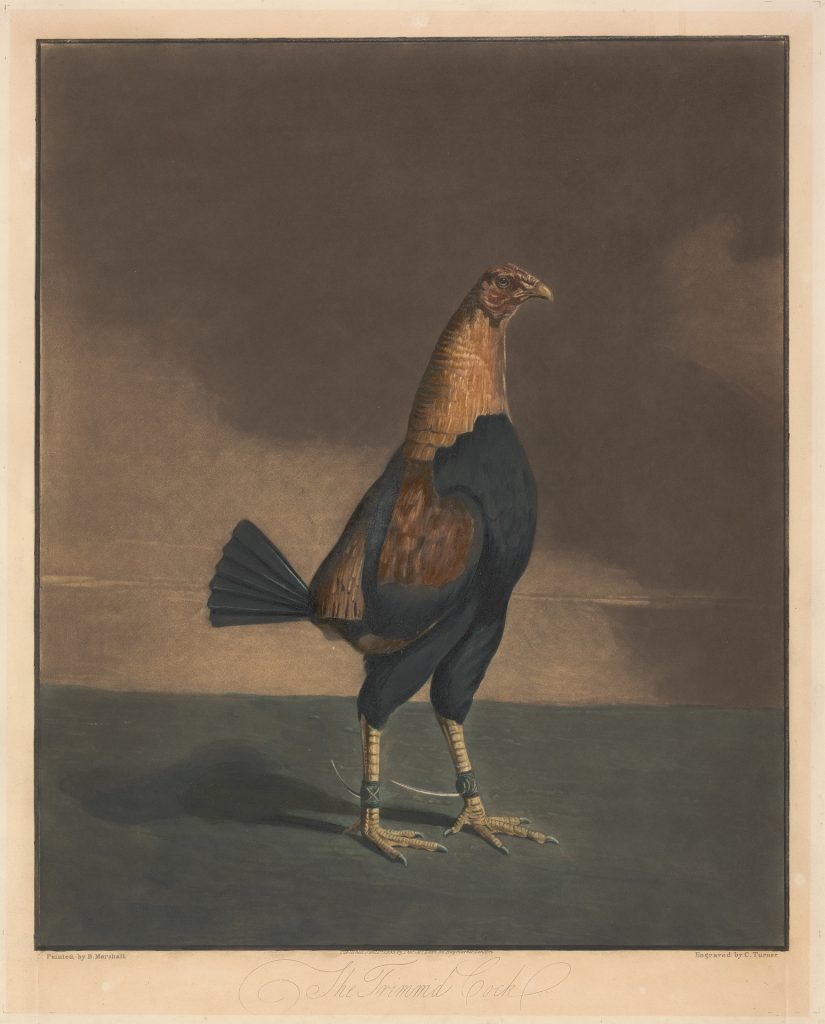
Charles Turner, The Trimmed Cock
Courtesy of the Yale Center for British Art
When I decided to follow on my last book on Horse Racing and British Society in the Long Eighteenth Century (Boydell, 2019) with a study of Sport Culture and Society in the Long Eighteenth Century I had intended to use 2020 as a year spent gathering material from the archives. That was a vain hope. Archives and record offices will take some time to get running effectively again. I am still to begin research. The past year has however been beneficial and forced me to rethink the initial structure that I had. Back at the beginning of 2020 I had had no thought of a chapter on ‘Animals, Humans and Sport’. We historians have lots to thank reviewers for, haven’t we?
Article of © Mike Huggins

